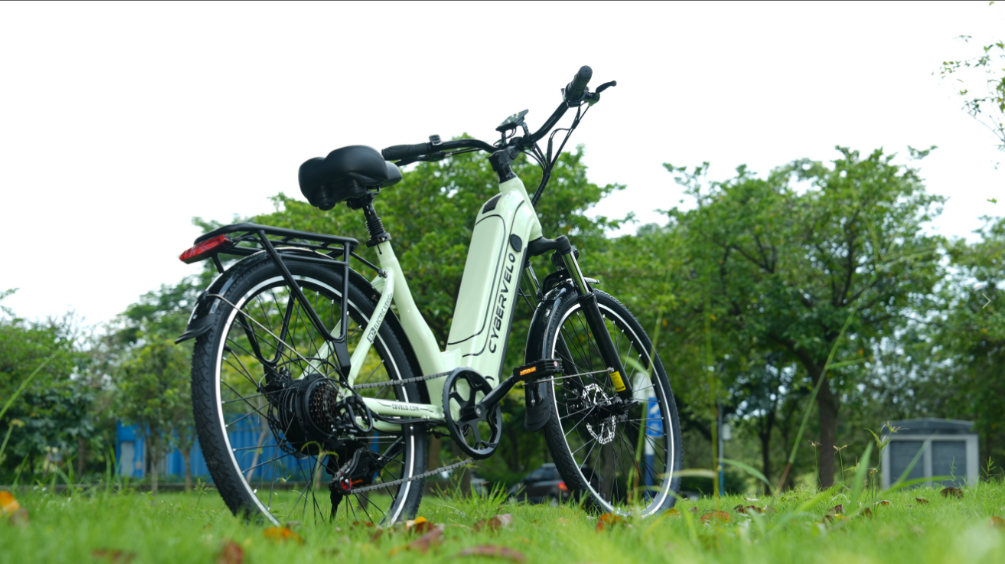One of the fundamental distinctions in the e-bike world is how the motor engages: Pedal Assist or Throttle. Understanding this difference is crucial for choosing the right bike, understanding legality, and knowing what kind of riding experience to expect.https://cbvelo.com/products/ek9
Pedal Assist (Pedelec): The Natural Extension
How it Works: The motor provides power only when you are actively pedaling. Sophisticated sensors detect your pedaling effort (cadence sensors measure rotation, torque sensors measure how hard you push) and instruct the motor to deliver a proportional level of assistance based on the selected mode (e.g., Eco, Tour, Sport, Turbo).
The Experience: This feels like a natural extension of your own pedaling power. You still get exercise, but hills flatten, headwinds diminish, and fatigue sets in much slower. The harder you pedal (especially with torque sensors), the more boost you get. It encourages an active riding style.
Benefits:
Feels Like Cycling: Maintains the core cycling experience.
Efficiency: Significantly extends battery range compared to throttle use, as the motor supplements your effort rather than replacing it entirely.
Control: Offers nuanced control over speed and effort through gear selection and assist level.
Wider Legality: Pedal-assist e-bikes (often classified as “Pedelecs” with speed limits like 15.5 mph or 20 mph where motor cuts out) are legal to ride anywhere traditional bicycles are permitted in most regions. They are generally not subject to licensing, registration, or insurance mandates (but always check local laws!).
Safety Perception: Often viewed more favorably by regulators and other path/road users as the rider is actively pedaling.
Considerations: Requires pedaling to move; you can’t just coast with motor power alone. Starting from a stop requires you to begin pedaling.
Throttle: Power on Demand
How it Works: Typically a twist grip or thumb lever on the handlebar. Engaging the throttle delivers motor power without the need to pedal. The bike can propel itself from a standstill or while coasting, similar to a scooter or motorcycle. Power delivery can be proportional (more twist = more power) or on/off.
The Experience: Offers instant acceleration and the ability to move without pedaling. This is convenient for quick starts from traffic lights, resting your legs on a long climb, or if you have limited mobility. It provides a more “motorized vehicle” feel.
Benefits:
Convenience: Effortless starts and ability to move without pedaling.
Accessibility: Excellent for riders with injuries, limited stamina, or mobility challenges. Helps overcome intimidating hills.
Control in Specific Situations: Useful for low-speed maneuvering or maintaining speed without varying pedaling effort.
Considerations:
Battery Drain: Using the throttle significantly drains the battery faster than pedal assist, as the motor is doing all the work.
Range Impact: Expect noticeably reduced range when relying heavily on the throttle.
Legality & Classification: This is critical. Throttle operation, especially above very low speeds (e.g., 6 mph / 10 km/h) or without pedaling, often pushes e-bikes into different legal categories (like “moped” or “L1e-B”). This can mean:
Age restrictions (e.g., 16+)
Licensing requirements (driver’s license, moped license)
Registration and insurance mandates
Restrictions on where you can ride (e.g., prohibited on bike paths, limited to roads)
Lower speed limits (e.g., 20 mph / 32 km/h) or power limits for throttle-only operation.
Always, always check your specific local and national regulations regarding throttle-equipped e-bikes before purchasing or riding. Laws vary drastically.
Potential Safety Concerns: Instant acceleration without pedaling can surprise others (pedestrians, cyclists) and requires responsible use. Can encourage less active riding.
The Hybrid Approach: PAS + Throttle
Many e-bikes, especially in North America, offer both Pedal Assist and a Throttle. This provides flexibility:
Use pedal assist for efficient cruising and exercise.
Use the throttle for quick starts, steep hill climbs, or when you need a break from pedaling.
Crucially: Even on bikes with both, the legal classification is often determined by the presence and capability of the throttle. A bike with a throttle that can propel it above a certain speed without pedaling might be classified differently than a pure Pedelec, regardless of whether you use the throttle or not. Know your local law!
Choosing What’s Right For You:
If you want the traditional cycling feel, maximum range, wide path access, and minimal legal hassle, a Pedal Assist (Pedelec) bike is likely the best choice.
If convenience from a standstill, overcoming physical limitations, or resting on hills is a top priority, and you understand and accept the potential legal restrictions (licensing, registration, where you can ride), a bike with a Throttle (or PAS + Throttle) might be suitable.
Understanding the fundamental difference between Pedal Assist and Throttle, and crucially, the legal implications of the latter in your area, is essential for making an informed decision and enjoying your e-bike responsibly.https://regic.net



